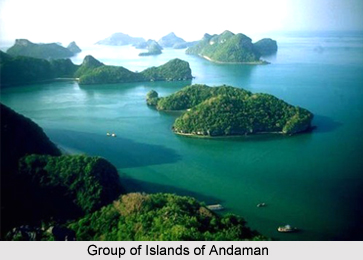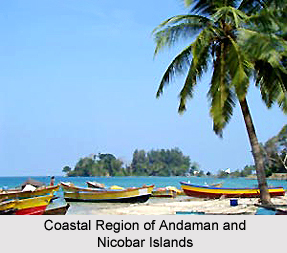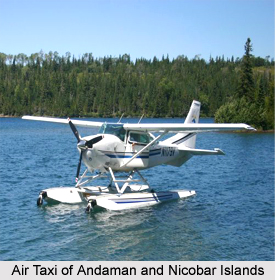 Nature Tourism in Andaman and Nicobar Islands attracts tourists primarily for its tropical forests. Thickly covered by deep green tropical forest, the archipelago supports a profusion of wildlife, including some extremely rare species of bird but the principal attraction for tourists lies offshore, around the pristine reefs ringing most of the islands. Filled with colourful fish and kaleidoscopic corals, the crystal-clear waters of the Andaman Sea feature some of the world`s richest and least spoilt marine reserves - perfect for snorkelling and scuba diving.
Nature Tourism in Andaman and Nicobar Islands attracts tourists primarily for its tropical forests. Thickly covered by deep green tropical forest, the archipelago supports a profusion of wildlife, including some extremely rare species of bird but the principal attraction for tourists lies offshore, around the pristine reefs ringing most of the islands. Filled with colourful fish and kaleidoscopic corals, the crystal-clear waters of the Andaman Sea feature some of the world`s richest and least spoilt marine reserves - perfect for snorkelling and scuba diving.
Foreign tourists are only permitted to visit certain parts of the Andaman group, separated by the deep Ten Degree Channel from the Nicobar Islands. The point of arrival for boats and planes is South Andaman, where the predominantly Tamil and Bengali community in the small but busy capital, Port Blair. This place accounts for almost half the total population. Permits, obtainable on arrival by both sea and air, are granted for a stay of one month. The most beautiful beaches and coral reefs are found on outlying islands.
From Port Blair the tourists can check out places of interest, such as, the Botanical Gardens, Burmah Nullah, the Wimberlygunj lumbering centres, in the jungle and the zoo on Haddo Promontoiy.
 Mayabunder is the jumping off place for Interview Island, a windswept nature sanctuary off the remote northwest coast of Middle Andaman. If the travellers come to the Andamans to watch wildlife, it should be top of their priority list. Foreigners aren`t permitted to spend the night on the island and to do a day-trip they must first obtain permission from the Chief Wildlife Warden in Port Blair. The only way to reach Interview is to charter a private fishing dinghy from Mayabunder jetty. The beach at the southern tip of the island has a perennial freshwater pool inside a low cave. According to a legend it is said that the well, a nesting site for white-bellied swifts, has no bottom.
Mayabunder is the jumping off place for Interview Island, a windswept nature sanctuary off the remote northwest coast of Middle Andaman. If the travellers come to the Andamans to watch wildlife, it should be top of their priority list. Foreigners aren`t permitted to spend the night on the island and to do a day-trip they must first obtain permission from the Chief Wildlife Warden in Port Blair. The only way to reach Interview is to charter a private fishing dinghy from Mayabunder jetty. The beach at the southern tip of the island has a perennial freshwater pool inside a low cave. According to a legend it is said that the well, a nesting site for white-bellied swifts, has no bottom.
Much the most popular excursion from Port Blair is the boat ride from Wandoor, 30km southwest, to one or other of the fifteen islets comprising the Mahatma Gandhi National Marine Park.
The long white beach at Wandoor is littered with the dry, twisted trunks of trees torn up and flung down by annual cyclones and fringed not with palms but by dense forest teeming with birdlife.
 From the jetty, the boats chug through broad creeks lined with dense mangrove swamps and pristine forest to either Red Skin Island or, more commonly, Jolly Buoy. The latter, an idyllic deserted island, boasts an immaculate shell-sand beach ringed by a bank of superb coral. The catch is that the boat only stops for around an hour, which is not nearly enough time to explore the shore and reef. While snorkelling off the edges of the reef, however, one should be beware of strong currents.
From the jetty, the boats chug through broad creeks lined with dense mangrove swamps and pristine forest to either Red Skin Island or, more commonly, Jolly Buoy. The latter, an idyllic deserted island, boasts an immaculate shell-sand beach ringed by a bank of superb coral. The catch is that the boat only stops for around an hour, which is not nearly enough time to explore the shore and reef. While snorkelling off the edges of the reef, however, one should be beware of strong currents.
The richly forested slopes of Mount Harriet make for decent exercise and can easily be done as a day-trip from Port Blair. One can take one of the passenger ferries from Chatham Jetty to Bamboo Flats or there are eight daily vehicle ferries from Phoenix Bay between 5.30am and 8.30pm. From Bamboo Flats it is a pleasant 7 kilometre stroll east along the coast and north up a path through trees hung with thick vines and creepers to the 365 metre summit, which affords fine views back across the bay.
An intermittent bus service runs between Bamboo Flats and Hope Town. Alternatively jeeps and taxis are available to take the tourists all the way to the top to Mount Harriet National Park. From here they can reach Madhuban on the coast northeast of the mountain by the 16 kilometre round route via Kala Patthar (Black Rock) and back via the coast. There is a decent beach at Madhuban and the area is still used for training logging elephants, so the tourists stand a good chance of seeing them learning their trade.



















